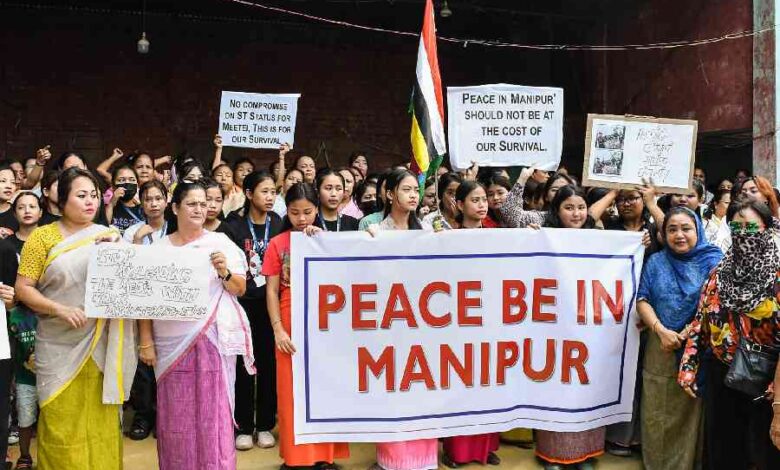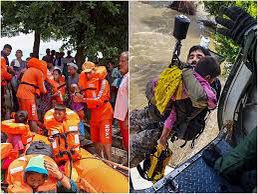Unravel the Mysteries of Manipur Violence
Make Sense of the Complexities of Manipur Violence and Discover the Truth Behind the Chaos

Manipur, located in Northeast India, has been plagued by violence for decades, often making headlines with news of bombings, shootings, and clashes. The state has been wracked by a complex web of issues such as ethnic tensions, insurgency movements, political and economic inequality, and human rights violations. In order to understand the complexities of Manipur violence, it is important to examine its historical background, causes, impact, key actors involved, and efforts towards conflict resolution.
Historical Background
Manipur has a rich and complex history, with over 34 recognized ethnic groups. During colonial rule, it was a princely state, and after India gained independence in 1947, it became a part of India. However, Manipuris did not entirely identify with India due to their cultural, linguistic, and historical differences. As a result, they have demanded greater autonomy and even secession from India.
The region has also been the site of several armed movements over the years, such as the United National Liberation Front (UNLF), the People’s Liberation Army (PLA), and the Zomi Revolutionary Army (ZRA), among others. These groups have fought against the Indian government for various reasons, such as the demand for sovereignty, identity, representation, and control over resources.
Causes of Manipur Violence
Manipur has a complex and diverse ethnic landscape, resulting in multiple identity-related conflicts. Many Manipuri ethnic groups, such as the Nagas, Meiteis, and Kukis, have had a long history of mistrust and competition. This has sometimes led to violent clashes, such as the Kuki-Naga conflict of the 1990s, which claimed hundreds of lives. The issue of ethnic tensions in Manipur is further complicated due to the fact that ethnic groups are not distributed evenly, creating a complex interplay of political and social marginalization.
Resource Conflicts
Manipur has abundant natural resources, including fertile land, forests, and mineral deposits. Conflict often arises over the control and exploitation of these resources, particularly in areas of longtime ethnic conflict. For example, the construction of dams on the Chindwin and Irrawaddy Rivers have been contested issues, leading to protests and clashes with security forces. Similarly, the exploration and extraction of oil and gas resources in the region have led to environmental degradation, economic exploitation, and political unrest.
Insurgency Movements
Various insurgency movements have emerged in Manipur over the years, demanding greater autonomy and even secession from India. These movements are often linked to ethnic groups and seek to protect their cultural, linguistic, and political rights. The armed groups engage in activities such as bombings, shootings, kidnappings, and extortions, posing a serious threat to the state’s security. The Indian government has deployed security forces to suppress these movements, often leading to human rights violations, such as extrajudicial killings and torture.
Human Rights Violations
The ongoing conflict in Manipur has resulted in grave human rights violations, particularly by the security forces and armed groups. The United Nations and other human rights organizations have documented cases of extrajudicial killings, disappearances, torture, arbitrary detention, and rape. These violations have had a profound impact on the victims and their families, leading to trauma, fear, and social exclusion. Many civil society organizations have been working to raise awareness of these violations and seek accountability and justice.
Political and Economic Inequality
The issue of political and economic inequality is closely linked to the other causes of Manipur violence. Marginalization and discrimination of certain ethnic groups have led to their economic and political disadvantage. For instance, many non-Meitei ethnic groups have limited access to government jobs, education, and healthcare. This has created a sense of alienation and disaffection among these groups, who feel that they have been left behind in the state’s development process. Similarly, corruption and nepotism have often led to a lack of equitable distribution of resources and opportunities, further fueling discontent and resentment.
Impact of Violence
The ongoing violence in Manipur has had a devastating impact on the lives of the people. Thousands of civilians and security personnel have been killed or injured over the years, leaving families shattered and traumatized. The fear and uncertainty caused by the violence have also led to the displacement of people from their homes and villages. Women and children have been particularly vulnerable to abuse and exploitation, such as human trafficking and sexual violence. The violence has also caused psychological trauma, leading to depression, anxiety, and PTSD among the survivors.
Economic Consequences
Manipur’s economy has suffered greatly due to the ongoing conflict. The violence has deterred potential investors, leading to a lack of employment opportunities and economic growth. Tourism, one of the state’s major revenue generators, has been severely affected due to the negative perception of the region as a conflict zone. The cost of maintaining security forces and infrastructure in the face of ongoing violence has also taken a toll on the state’s finances. Overall, the economic consequences of violence have perpetuated the cycle of poverty, leading to further grievances and resentment.
Consequences on Development
The violence in Manipur has hindered the state’s development process in several ways. The lack of security and stability has made it difficult to implement development projects, such as infrastructure development, healthcare, and education. The ongoing conflict has diverted resources away from development towards security, perpetuating the cycle of poverty and underdevelopment. The violence has also led to brain drain, as many educated and skilled individuals have left the state in search of better opportunities elsewhere. The overall impact of the violence on Manipur’s development has been profound, perpetuating a vicious cycle that must be broken for progress to take place.
Key Actors Involved
The Indian government has been a major player in the ongoing conflict in Manipur, deploying security forces to suppress insurgency movements and maintain law and order. The government has implemented several policies and programs to address the underlying causes of violence, such as the creation of autonomous administrative bodies for certain ethnic groups. However, these efforts have often been criticized for being inadequate or ineffective, leading to further unrest.
Armed Groups
The various armed groups operating in Manipur are key actors in the ongoing violence. They seek to protect the interests of their respective ethnic groups and have engaged in a range of violent activities to achieve their goals. While some armed groups have engaged in talks with the government to find a peaceful resolution, others continue to refuse any negotiation or compromise. The influence and power of these groups vary, depending on their ideological orientation, military strength, and support from local communities.
Civil Society Organizations
Civil society organizations, including human rights groups, women’s organizations, and youth groups, have played an important role in raising awareness of the human cost of violence in Manipur. These organizations have often been critical of the government’s approach to conflict resolution, calling for more inclusive and participatory processes. They have also provided support and services to the victims of violence, such as legal assistance and counseling. Several civil society organizations have also been involved in peacebuilding initiatives, seeking to bring together different groups and communities to find common ground and build trust.
Local Communities
Local communities are the ultimate stakeholders in the ongoing conflict in Manipur, as they face the consequences of the violence on a daily basis. They have sometimes been caught in the crossfire between armed groups and security forces, leading to displacement, trauma, and loss. The issue of ethnic tensions and marginalization has also affected local communities, leading to distrust and division. However, local communities have also been active in finding ways to address the underlying causes of violence, such as through community-based initiatives and peacebuilding efforts.
Fact and Figures
According to the National Crime Records Bureau (NCRB), Manipur had the highest crime rate (308.5 per 100,000) in India in 2019, with a total of 3,793 cases reported. This includes cases of murder, attempt to murder, kidnapping, and extortion.
In 2018, the Internal Displacement Monitoring Centre (IDMC) reported that the ongoing conflict in Manipur had resulted in over 14,000 internally displaced persons (IDPs). The report noted that the majority of IDPs had been displaced due to armed conflict and general violence.
According to the South Asia Terrorism Portal (SATP), a total of 60 people, including civilians, security forces, and militants, were killed in insurgency-related violence in Manipur in 2020. This represents a decline from previous years, but the situation remains fragile.
The World Bank’s 2020 Ease of Doing Business report ranked Manipur at 27th position among Indian states, with a poor score of 48.5 out of 100. This indicates a lack of investment and business opportunities in the state, due to the ongoing conflict and infrastructural challenges.
Efforts towards Conflict Resolution
Several initiatives have been taken by the Indian government and civil society organizations towards finding lasting peace in Manipur. The government has engaged in negotiations with various armed groups to find a political solution, such as through the creation of autonomous administrative bodies for certain ethnic groups. The government has also implemented several development programs, such as the Integrated Action Plan, to address the economic and social grievances of the people.
Civil society organizations have also been active in conflict resolution efforts, seeking to bring together different groups and communities to find common ground and build trust. For instance, the Manipur Women Gun Survivors Network (MWGSN) has been working to amplify the voices of women affected by the violence, raising awareness of the human cost of violence and promoting peacebuilding initiatives. Similarly, the Centre for Research and Advocacy, Manipur (CRAM) has been advocating for justice and accountability for human rights violations committed in the state.
References
- “Crime in India.” National Crime Records Bureau, Ministry of Home Affairs, Government of India, 2020.
- “India: Internal displacement amid Conflict.” Internal Displacement Monitoring Centre, 2018.
- “Manipur: Subversive forces at bay.” South Asia Terrorism Portal, Institute for Conflict Management, 2021.
- “Ease of Doing Business in India.” World Bank Group, 2020.






